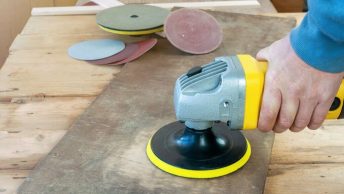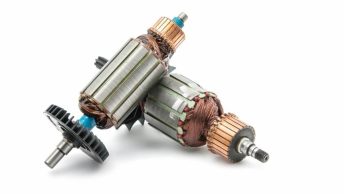When selecting wood for your next project, you may have encountered the terms ‘rift sawn’ and ‘quarter sawn.’ These two popular methods of cutting lumber result in different grain patterns.
In this article, we’ll examine what rift-sawn and quarter-sawn mean, their differences, and their advantages.
Rift Sawn Wood
Rift-sawn wood is cut at a specific angle of 30-60 degrees to the growth rings. This results in a straight grain pattern with no visible flecking or ray figure, giving it a clean and consistent appearance.
The name ‘rift’ comes from the fact that this cutting method creates a rift or separation between the tree’s annual growth rings.
Advantages
- Straight grain pattern results in a clean and consistent appearance
- Less prone to warping than other types of sawing methods due to the orientation of the grain
- Ideal for projects that require stability, such as flooring or furniture
- It can be stained easily because of its uniform grain pattern
Disadvantages
- It is more expensive than other types of sawing methods due to the amount of waste produced during cutting
- Limited availability compared to other types of sawing, making it a less popular option
- It is not as visually interesting as other sawing methods due to the lack of figures and flecking
Must Check: Orbital Sander vs Sheet Sander
Quarter Sawn Wood
Quarter-sawn wood is cut at a 90-degree angle to the growth rings, resulting in a straight grain pattern with prominent flecking or ray figures.
The name ‘quarter’ comes from the log being first quartered, then cut into quarters again, and so on, until the desired thickness is achieved

Advantages
- Unique and visually striking grain pattern with flecks or rays that catch the light
- More stable than plain sawn (also known as flat sawn) wood due to the orientation of the grain
- Resistant to warping and shrinking, making it ideal for outdoor projects or high-moisture environments
- Available in a wide variety of wood species and sizes
Disadvantages
- It is more expensive than plain-sawn wood due to the complex cutting process
- It can be difficult to work with due to the tendency to splinter or tear out during cutting
- Not suitable for staining as it can result in a blotchy appearance due to the grain pattern
- Less efficient use of the log, resulting in more waste during cutting
- Availability may be limited in certain wood species and sizes compared to plain-sawn wood
Difference Between Rift Sawn VS Quarter Sawn?
| Characteristic | Rift Sawn | Quarter Sawn |
| Grain Pattern | Grain runs diagonally to the face, typically at a 30-60 degree angle. | Grain runs perpendicular to the face, creating a straight, vertical grain pattern. |
| Stability | More stable than plain-sawn lumber but less stable than quarter-sawn. | Highly stable and less prone to warping, shrinking, or expanding. |
| Appearance | Less prominent ray fleck or medullary rays. | Prominent ray fleck or medullary rays, often seen as “tiger stripes” in oak. |
| Cost | Generally less expensive than quarter-sawn lumber. | Tends to be more expensive due to the precision of the cut and the reduced yield. |
| Waste | More waste generated during the milling process. | Less waste generated, as most of the log is used effectively. |
| Uses | Suitable for some furniture and cabinetry applications. | Preferred for high-quality furniture, flooring, and decorative applications. |
| Expansion and Contraction | Moderate movement with changes in humidity. | Minimal movement with changes in humidity. |
What to Consider When Buying?
When deciding between rift-sawn and quarter-sawn wood, there are a few factors to consider depending on your project needs:

- Budget: Rift-sawn wood tends to be more expensive due to the waste produced during cutting. If you have a strict budget, quarter-sawn may be a better option.
- Visual appeal: If you’re looking for a unique and visually striking grain pattern, quarter-sawn wood may be the way to go. However, rift-sawn wood would be a better choice if you prefer a clean and uniform appearance.
- Project requirements: If your project requires stability and resistance to warping, such as flooring or furniture, rift-sawn wood would be the ideal choice.
But if you’re looking for wood that can withstand outdoor conditions or high-moisture environments, quarter-sawn would be a better option.
Must check: Brush vs Brushless Motor
Conclusion
Both rift-sawn and quarter-sawn wood have their unique characteristics and advantages.
When deciding between the two, it’s important to consider your budget, project requirements, and visual preferences.
Ultimately, whichever cutting method you choose, both types of wood can result in beautiful and high-quality projects that will stand the test of time.
So, next time you select wood for your project, keep these differences in mind and choose the best method that suits your needs.




